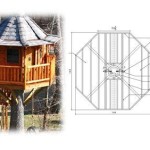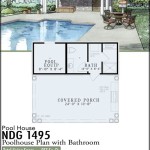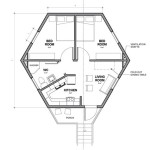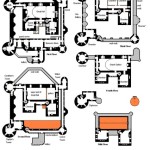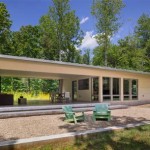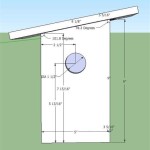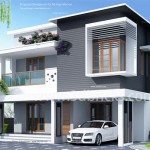Exploring the Appeal of Big Porch House Plans
The enduring allure of a spacious porch connected to a thoughtfully designed house remains a significant draw for many homeowners. Big porch house plans represent more than just architectural blueprints; they embody a lifestyle centered on relaxation, community, and connection with the outdoors. This design trend has seen a resurgence, driven by a desire for spaces that foster social interaction and provide a comfortable transition between indoor and outdoor living. Understanding the various aspects of big porch house plans – from architectural styles and functional considerations to regional adaptations and cost implications – is crucial for anyone considering this type of home.
Historically, porches served practical purposes, offering shade in hot climates and providing a buffer against the elements. Before the widespread adoption of air conditioning, porches were invaluable spaces for cooling down and enjoying fresh air. Socially, they acted as extensions of the living room, places where families gathered, neighbors chatted, and community bonds were strengthened. The modern resurgence of big porches reflects a longing for those simpler times and a renewed appreciation for the benefits of outdoor living.
Key Point 1: Architectural Styles and Porch Integration
Big porch house plans are not limited to a single architectural style. While they are often associated with traditional American designs like Craftsman, Farmhouse, and Colonial Revival, they can also be successfully incorporated into more contemporary styles. The key lies in seamlessly integrating the porch into the overall design aesthetic of the house.
Craftsman Style: This style emphasizes natural materials, handcrafted details, and a low-pitched roof with wide eaves. A large front porch, often supported by tapered columns resting on stone piers, is a defining characteristic. The porch typically features exposed rafters and a warm, inviting atmosphere.
Farmhouse Style: Modern Farmhouse plans often feature expansive wraparound porches, reminiscent of traditional farmhouses. These porches are usually constructed with simple materials like wood and often include features like porch swings, rocking chairs, and rustic lighting fixtures. The goal is to create a comfortable and welcoming outdoor space that complements the simple, functional design of the farmhouse.
Colonial Revival Style: These homes often feature symmetrical facades and formal detailing. A large front porch, typically supported by classical columns, adds to the stately appearance of the house. While not always as expansive as those found on Craftsman or Farmhouse homes, Colonial Revival porches still offer ample space for relaxing and entertaining.
Contemporary Style: Even modern and contemporary homes can incorporate big porches. In these cases, the porch design tends to be more minimalist, often featuring clean lines, sleek materials, and open floor plans that seamlessly connect the indoor and outdoor spaces. The porch may be integrated into the design with features like large sliding glass doors or retractable walls.
The integration of the porch into the architectural style goes beyond aesthetics. It also involves considering the structural aspects, such as the roof design, the support columns, and the materials used. The porch should appear as a natural extension of the house, rather than an afterthought. Careful attention to detail is essential to achieve a cohesive and visually appealing design.
Key Point 2: Functional Considerations and Design Elements
Beyond architectural style, the functionality of a big porch is paramount. A well-designed porch should be comfortable, inviting, and suited to the homeowner's specific needs and lifestyle. Several factors contribute to the overall functionality of the porch, including size, layout, materials, and amenities.
Size and Layout: The size of the porch should be proportional to the size of the house and the intended use of the space. A small porch may be sufficient for a couple, while a larger porch is necessary for a family or for those who entertain frequently. The layout should be carefully planned to maximize seating areas, pathways, and views. Consider the orientation of the porch to optimize shade and sunlight throughout the day.
Materials: The choice of materials is critical for both aesthetics and durability. Wood is a popular choice for porch flooring, railings, and columns, offering a classic and warm appearance. Composite decking materials provide a low-maintenance alternative to wood, resisting rot, insects, and fading. Stone or brick can be used for porch foundations and accents, adding a touch of elegance and durability. The materials should be chosen to complement the architectural style of the house and to withstand the local climate conditions.
Amenities: The addition of amenities can greatly enhance the functionality and enjoyment of a big porch. These may include:
- Outdoor furniture: Comfortable seating, tables, and lounge chairs are essential for creating a relaxing and inviting atmosphere.
- Lighting: Outdoor lighting is crucial for safety and ambiance, allowing the porch to be enjoyed at night. Options include recessed lighting, sconces, lanterns, and string lights.
- Ceiling fans: Ceiling fans can provide a cooling breeze in warm weather, making the porch more comfortable.
- Outdoor kitchen: An outdoor kitchen can transform the porch into an entertainment hub, allowing for grilling, cooking, and dining outdoors.
- Fireplace or fire pit: A fireplace or fire pit can extend the use of the porch into the cooler months, providing warmth and ambiance.
- Screening: Screening can protect the porch from insects, allowing for comfortable outdoor living without the annoyance of mosquitoes and other pests.
Carefully considering these functional elements will ensure that the big porch is not only aesthetically pleasing but also a practical and enjoyable space for the homeowner.
Key Point 3: Regional Adaptations and Climate Considerations
The design of a big porch house should be tailored to the specific regional climate and environmental conditions. What works well in a warm, sunny climate may not be suitable for a cold, snowy region. Adapting the porch design to the local climate is essential for maximizing comfort and minimizing maintenance.
Warm Climates: In warm climates, the focus is on providing shade and ventilation. Deep overhangs and wide eaves can help to block the sun's rays, keeping the porch cooler. Ceiling fans and strategically placed plantings can further enhance ventilation and create a comfortable microclimate. Screening is often essential to protect against insects.
Cold Climates: In cold climates, the porch design should prioritize protection from the elements. A covered porch with windbreaks can provide shelter from cold winds and snow. Consider using durable materials that can withstand freeze-thaw cycles. A fireplace or fire pit can extend the use of the porch into the colder months. Enclosing the porch with removable screens or windows can create a three-season room that can be used throughout the year.
Humid Climates: In humid climates, moisture management is crucial. Choose materials that are resistant to rot and mildew. Ensure proper drainage to prevent water from pooling on the porch. Consider using screens to protect against insects, which tend to thrive in humid conditions.
Coastal Regions: Coastal regions are subject to salt air and strong winds. Choose materials that are resistant to corrosion and weathering. Securely fasten railings and columns to withstand high winds. Consider using storm shutters or screens to protect the porch from storms.
By carefully considering the regional climate and environmental conditions, homeowners can create a big porch that is not only beautiful and functional but also durable and long-lasting.
Furthermore, the orientation of the house on the property significantly affects the usability of the porch. Southern-facing porches in northerly climates will receive maximum sunlight, making them suitable for year-round use, whereas in hotter climates, a northern or eastern-facing porch might be preferred to avoid excessive heat during the hottest parts of the day. Prevailing wind patterns should also be considered; orienting the porch to take advantage of breezes can improve ventilation and comfort.
Beyond design and orientation, landscaping plays a vital role in enhancing the appeal and functionality of a big porch. Strategically placed trees and shrubs can provide shade, privacy, and a natural buffer against the elements. Climbing vines can add visual interest and soften the edges of the porch. Consider incorporating potted plants and hanging baskets to create a welcoming and inviting atmosphere. Selecting native plants that are well-suited to the local climate can minimize maintenance and support local ecosystems.
Lighting design is another critical aspect of big porch house plans. Well-placed lighting can enhance safety, security, and ambiance. Consider using a combination of ambient, task, and accent lighting to create a layered effect. Ambient lighting provides general illumination, while task lighting is used for specific activities, such as reading or dining. Accent lighting highlights architectural features and landscaping elements. Motion-sensor lights can provide added security. Choose energy-efficient lighting options, such as LED bulbs, to minimize energy consumption.
Finally, accessibility should be a key consideration in the design of a big porch. Ensure that the porch is easily accessible to people of all abilities, including those with mobility impairments. Consider incorporating ramps or gently sloping pathways to provide access for wheelchairs and walkers. Provide adequate lighting to ensure safety at night. Choose slip-resistant flooring materials to minimize the risk of falls. Universal design principles can be applied to create a porch that is both functional and inclusive.

Southern Living Dreamy House Plans With Front Porches Blog Dreamhomesource Com

House Plans With Wraparound Porches Porch Houseplans Com
:max_bytes(150000):strip_icc()/fcp_1131-6d1ee16d664949f08815b69d4a5bdbe3.jpg?strip=all)
13 House Plans With Wrap Around Porches

Wrap Around Porch House Plans

Wrap Around Porch House Plans Designs For Builders

House Plans With Porches Wrap Around Porch

2 Bedroom Bath Cottage House Plan Alp 09j3 Houseplan Com

Country House Plans Floor With Front Porches

One Story House Plans With Porches Dfd Blog

Plan 16804wg Country Farmhouse With Wrap Around Porch House Styles Dream Plans

